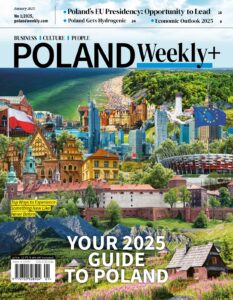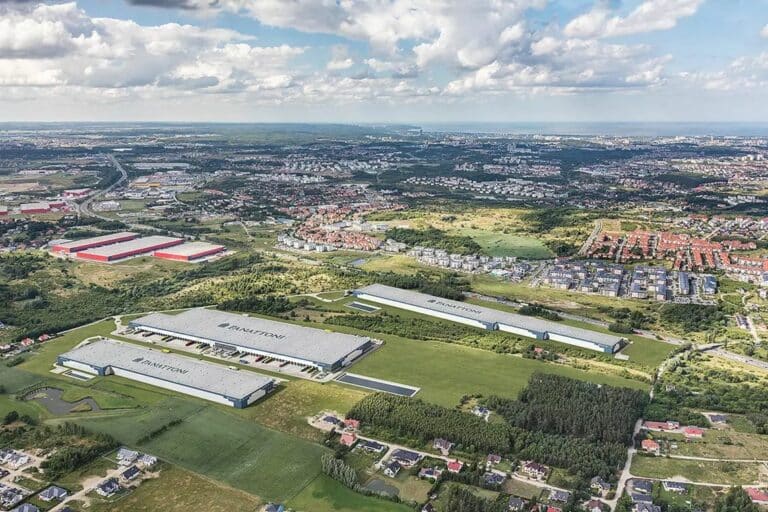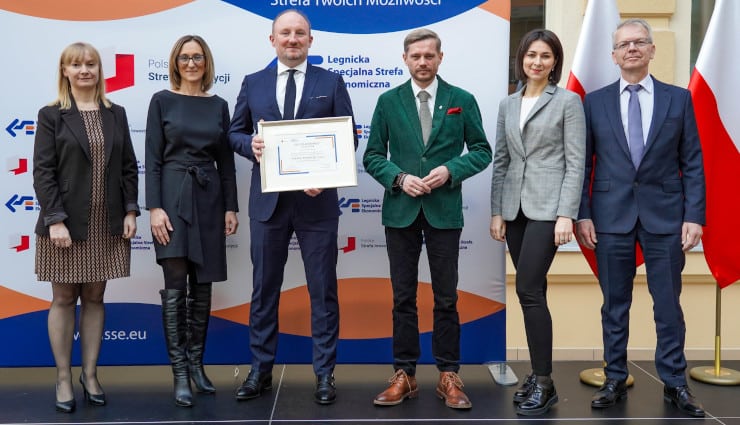Central and Eastern Europe PE and VC sectors shine on
The Central and Eastern European macroeconomic growth story is set to continue as the economies of the region catch up with those further west, according to a new report by Bain & Company.
The private equity industry in Central and Eastern Europe has gone through three distinct phases. The sector boomed after eight countries joined the EU in 2004 (all but Bulgaria, Croatia, and Romania from the 11 included in the report). But just four years later, the arrival of the global financial crisis prompted investors to pare back their activity. Since then, the past decade has brought stabilization and a return to a growth trajectory. After a Covid-driven drop in 2020, buyout value reached a record high in 2021.
The process is being driven by factors including a highly qualified labour force backed by outstanding universities; investments in nearshoring as manufacturers reconsider their global supply chains, and EU funding to help close the gap in infrastructure and support the transition to a green economy, the report notes.
The 11 countries of Central and Eastern Europe had a combined GDP of €1.3 trillion in 2021, comparable to the GDPs of the Nordic countries, South Korea, or Canada, at €1.4 trillion each. That accounted for 10% of the EU’s economy, even though the region has about a quarter of the population. Growth of about 3% in 2016 to 2021 consistently outpaced the Western European rate of around 1%.
These faster rates of growth also come with lower volatility than other emerging markets. Integration with Western European economies through the single market; steady, long-term inflows from the EU; and the EU’s guarantees of legal certainty combine to have a stabilizing effect. In fact, five of the 11 countries have already adopted the euro, while another two have established pegs to the single currency.
An educated labour force
The region’s workforce is another attraction—not only for its lower labour costs compared with those of Western Europe, but for quality and skills that are impressive by global standards. In fact, by several measures the 11 countries in this report are ahead of the West. CEE has a higher percentage of graduates with engineering majors than Western Europe (14.8% versus 14.5% as of 2019) and accounts for 19% of the EU’s developer talent pool.
Employment of ICT specialists in the region grew by 5% per year from 2011 to 2020, outstripping the 4% pace in Western Europe.
Within the region, Poland’s education system stands out as an effective engine for innovation, with 1.2 million students in its 368 academic centres.
Poland is also increasingly attractive to international students from other emerging markets such as India and Ukraine.
Infrastructure development and EU funds
The rate of household broadband connections is similar to that of Western Europe, at 87% versus 92%, while 5G coverage lags behind, reaching 6% of households compared with 18%. Corporates have room for improvement in cloud computing usage, bringing their rate up from 25%, closer to the Western European level of 41%.
In the two decades from 2007 to 2027, the EU is ploughing €584 billion of cohesion policy funding into the region to support development. During the most recently completed phase, in 2014–2020, 24% of the funding went into network infrastructure in transportation and energy; the No. 2 priority was the low-carbon economy, with 11%, followed by environmental protection and resource efficiency at 10%.
As infrastructure catches up with more developed economies in Western Europe, so too does productivity. The gap in average labour productivity per capita between the region’s countries and their Western peers has steadily narrowed over the past 15 years.
FDI inflows
In addition to the flow of EU cash, private investment also continues to move into the region. The value of greenfield FDI projects in CEE grew faster than the global rate in 2015–2020. Poland in particular ranked No. 3 in Europe by the value of such projects announced in 2020, outpacing the larger economies in France, Spain, Italy, and the Netherlands
These investments are increasingly advanced, with several multinational tech companies choosing this part of the world as a location for their R&D centres and hubs. Poland posted a compound annual growth rate (CAGR) of about 8% in the number of R&D personnel from 2010 to 2020, and a 14% CAGR in the number of R&D entities.
Improving regulatory climate
Companies and investors in CEE still face higher bureaucratic hurdles, including regulatory uncertainty, compared with those in more developed markets. However, the ease of doing business in the region has improved steadily over the past 10 years, approaching the EU average and well ahead of Southeast Asia, according to the World Bank’s annual ranking.
Nearshoring and reshoring
CEE is already a nearshoring hub for business services and is now in the spotlight for manufacturing as Covid causes entire industries to rethink their global supply chains. About 68% of German manufacturers say they’re planning to diversify their supply chains after the pandemic, and 64% of US manufacturers expect reshoring. CEE countries took six of the top seven spots in the 2020 Nearshoring Index from Savills; major corporates with planned or completed investments to nearshore manufacturing into the region include German engineering and technology group Bosch, French sporting goods retailer Decathlon, and German carmaker BMW.
Consolidation and internationalization
Companies in the region are on average smaller than their counterparts in Western Europe, indicating higher fragmentation within sectors and greater potential for consolidation. A higher share of people in CEE work for companies with fewer than 250 people.
33% of respondents to a survey carried out by Bain & Company among leading private equity funds in CEE chose cross-border integration within CEE as the most important trend in the region, with the same share identifying international expansion of local companies.
CEE also boasts global players such as mobility company Bolt, communications provider Skype, and financial services app Wise, all with roots in Estonia (the smallest of the 11 countries); Hungarian software maker Prezi; and Polish games developer, publisher, and distributor CD Projekt.
The green transition
The region’s transition to a low-carbon economy is one of the priorities for EU funding, in line with the bloc’s objectives, and CEE will receive a disproportionate share of EU funds in this area. The share of renewables in the energy balance has been growing across the region, receiving a boost from the need to give up Russian fossil fuels following the country’s invasion of Ukraine in February 2022.
ESG becoming a priority
GPs based in CEE are ambitious in setting their ESG agendas, with 89% having already set or planning to set specific commitments or targets. And investing in companies from the region can be positive for measures of gender diversity. Of the 11 countries we examine, all but one are above the EU average for the percentage of women in management; CEE countries hold the top five spots in the bloc.
Local LPs take the stage
Although they are still more rare than in developed markets, local LPs—both public and private—are beginning to emerge, a trend that may further accelerate the scaling of the region’s PE landscape. One local LP is the state-owned Polish Development Fund (PFR), which has allocated PLN 1.1 billion to buyout, mezzanine, and private debt funds.
Local GPs in Central and Eastern Europe tend to target small- and mid-cap deals, with their international peers conducting the largest transactions. 67% of respondents say they typically don’t have any competitors in final bidding, and 77% say a majority of their transactions are proprietary.
Venture capital
VC investment in the region has skyrocketed in recent years, with the 2021 value just over nine times the level in 2015. That’s the fastest growth rate for any region in Europe.
The size of investment rounds has also expanded. In 2016, there were no rounds larger than $40 million; pre-seed and seed rounds accounted for 42% of total funds raised. By 2021, megarounds of $250 million or more made up 32% of the total. That’s reflected in the number of unicorns the region is now producing.
Almost all CEE countries have produced several unicorns—from Skype, Bolt, and DocPlanner to UiPath, Payhawk, and GoTo.
In 2021, pre-seed rounds made up as much as 70% of the total number of funding rounds on average for CEE countries, compared with 51% for Western European countries
In terms of the sources of capital, CEE boasts a healthy mix of local and international funds. Funding from the US is especially present in megarounds in the region, accounting for 85% of funds raised in rounds of $100 million or more. Meanwhile, the European Investment Bank, the lending arm of the EU, and the European Investment Fund set up the European Tech Champions Initiative, which will manage a €10 billion, multi-investor fund of funds structure.
A comparison with other ecosystems indicates that growth may be as fast as two to three times over four years if the region follows the same trajectory as Western European ecosystems from this point in their development. CEE could reach a trajectory like that of Germany.
Headwinds
During the previous downturn, CEE countries proved more resilient, with Poland coming through the crisis as the only EU state that avoided recession.
Russia’s war on Ukraine also delivered a shock to all countries in CEE, including a security crisis, inflows of refugees, and the economic effects of sanctions. Of the 11 countries covered in this report, four (Poland, Slovakia, Hungary, and Romania) border Ukraine. Poland and Lithuania also border Russia’s Kaliningrad exclave, and Estonia and Latvia border Russia proper. Several countries, including Poland, Czechia, and Estonia, have been prominent in their provision of military aid.
The dangers are economic: higher inflation, volatile markets for energy and food, and the costs of caring for refugees.
The potential benefits to the labour markets from the presence of refugees have so far been limited: most refugees are women and are unlikely to take jobs in the construction and logistics sectors that have lost workers as migrant Ukrainian men have returned home to fight. Many would also need reliable childcare, and it’s not clear how long they’ll stay. In fact, many are already returning to Ukraine, with EU border agency Frontex reporting in June that more people were travelling to Ukraine from member countries than entering them.
In the longer term, the war is likely to lead to structural changes in the region’s economies, including greater military and security spending, which will benefit sectors such as cybersecurity; an accelerated transition to green energy; and the potential for long-term involvement in the postwar reconstruction of Ukraine.
Respondents see good prospects for doing business with Ukraine once the war ends, primarily benefiting the construction, industrials, and business services sectors. Overall dependence of CEE economies on trade with Russia is not large (about 3% of the region’s exports and imports).







